Yves here. This post on permafrost may initially strike many readers as being unduly basic, but don’t be deceived. Once it gets going, it provides a lot of useful and hopefully new detail.
By Mark J. Lara, Assistant Professor in Plant Biology & Geography, University of Illinois at Urbana-Champaign. Originally published at The Conversation
Across the Arctic, strange things are happening to the landscape.
Massive lakes, several square miles in size, have disappeared in the span of a few days. Hillsides slump. Ice-rich ground collapses, leaving the landscape wavy where it once was flat, and in some locations creating vast fields of large, sunken polygons.
It’s evidence that permafrost, the long-frozen soil below the surface, is thawing. That’s bad news for the communities built above it – and for the global climate.
As an ecologist, I study these dynamic landscape interactions and have been documenting the various ways permafrost-driven landscape change has accelerated over time. The hidden changes underway there hold warning for the future.
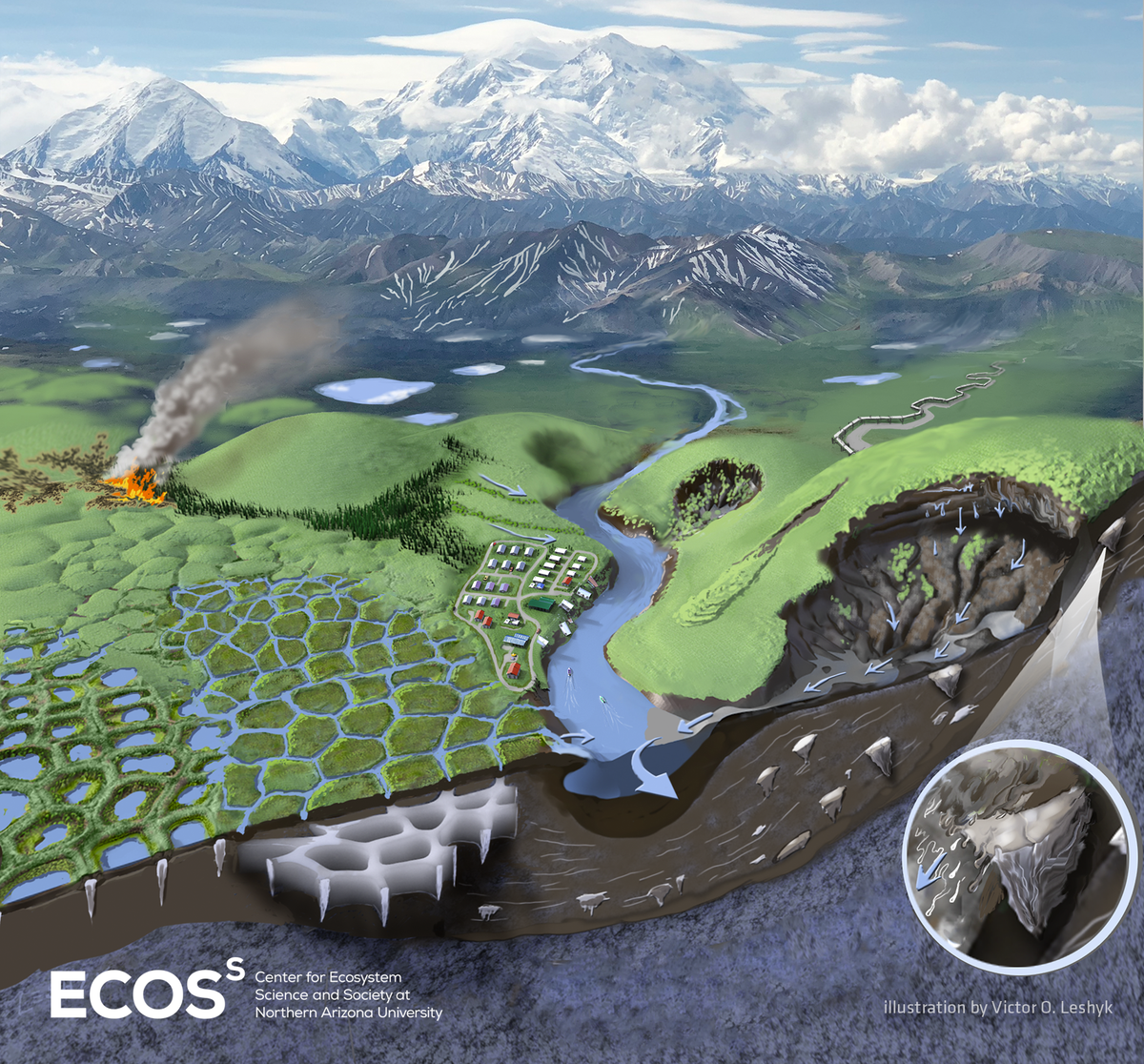
What Is Permafrost?
Permafrost is perennially frozen soil that covers about a quarter of the land in the Northern Hemisphere, particularly in Canada, Russia and Alaska. Much of it is rich with the organic matter of long-dead plants and animals frozen in time.
These frozen soils maintain the structural integrity of many northern landscapes, providing stability to vegetated and unvegetated surfaces, similar to load-bearing support beams in buildings.
As temperatures rise and patterns of precipitation change, permafrost and other forms of ground ice become vulnerable to thaw and collapse. As these frozen soils warm, the ground destabilizes, unraveling the interwoven fabric that has delicately shaped these dynamic ecosystems over millennia. Wildfires, which have been increasing across the Arctic, have been increasing the risk.
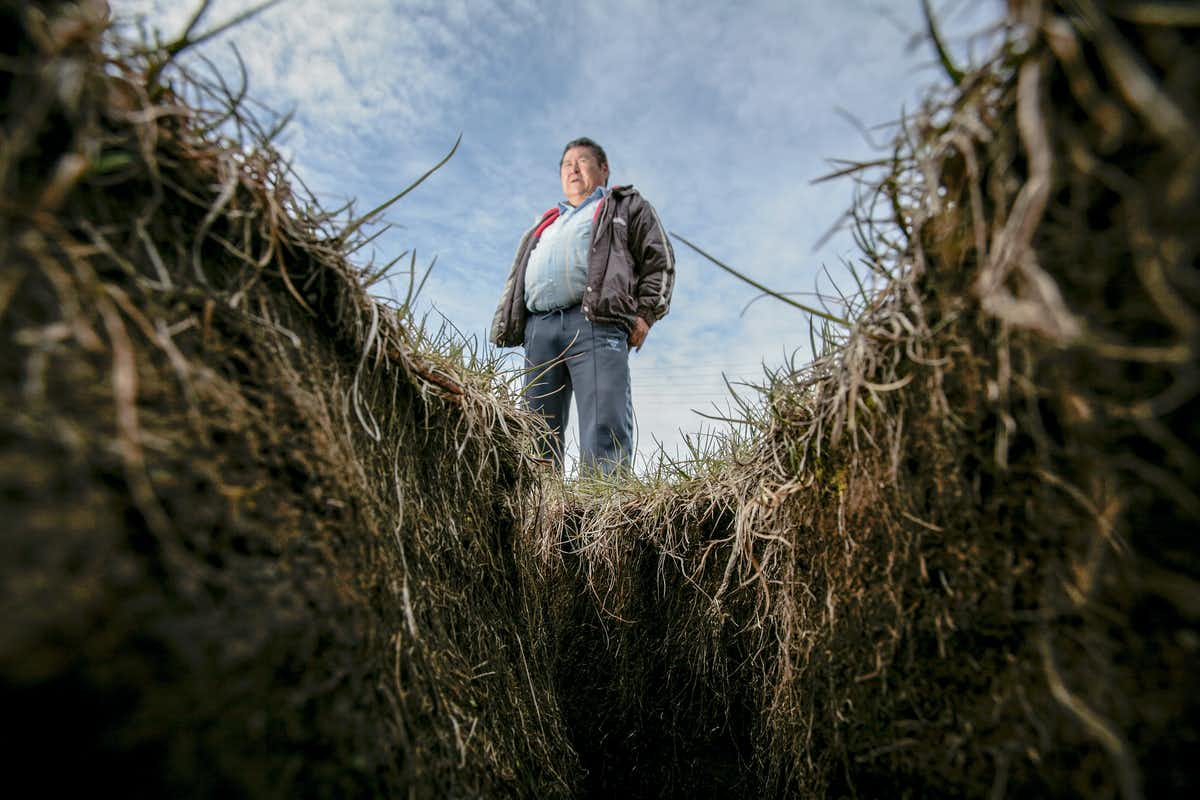
Under the surface, something else is active – and it is amplifying global warming. When the ground thaws, microbes begin feasting on organic matter in soils that have been frozen for millennia.
These microbes release carbon dioxide and methane, potent greenhouse gases. As those gases escape into the atmosphere, they further warm the climate, creating a feedback loop: Warmer temperatures thaw more soil, releasing more organic material for microbes to feast on and produce more greenhouse gases.
The Evidence: Disappearing Lakes
Evidence of human-caused climate change is mounting across the permafrost extent.
The disappearance of large lakes, multiple square miles in size, is one of the most striking examples of recent patterns of northern landscape transitions.
The lakes are draining laterally as wider and deeper drainage channels develop, or vertically through taliks, where unfrozen soil under the lake gradually deepens until the permafrost is penetrated and the water drains away.
There is now overwhelming evidence indicating that surface water across permafrost regions is declining. Satellite observations and analysis indicate lake drainage may be linked with permafrost degradation. Colleagues and I have found it increases with warmer and longer summer seasons.
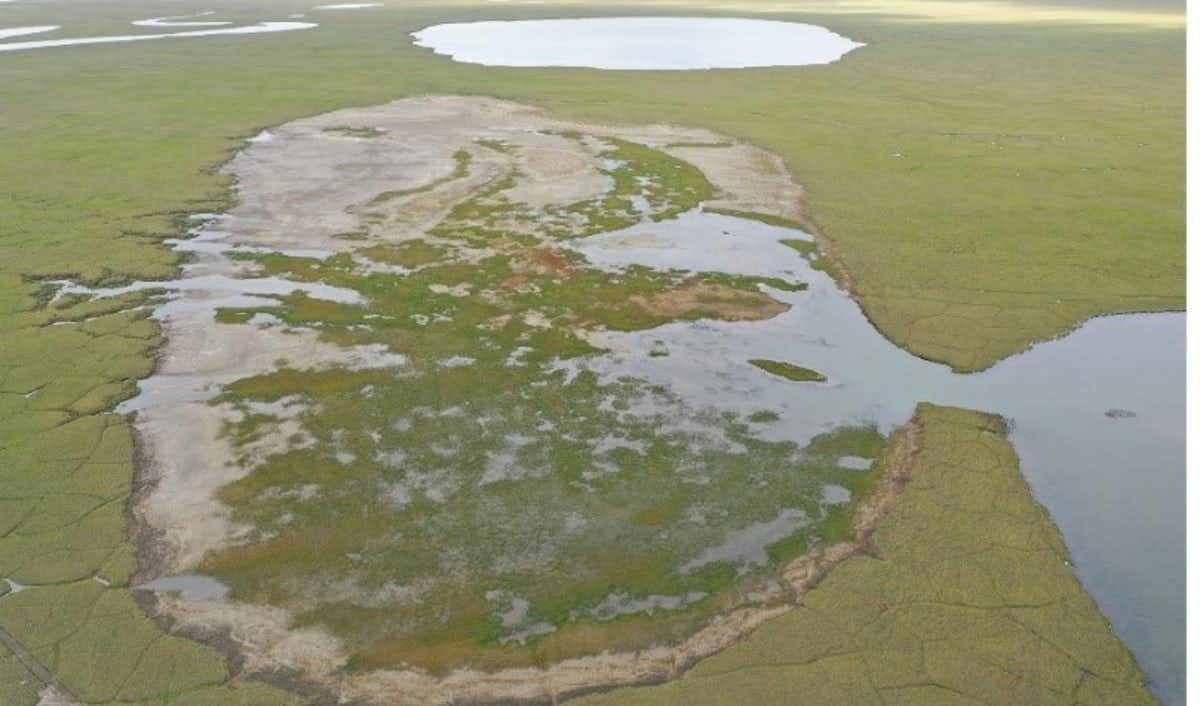
This insight came after some of the highest rates of catastrophic lake drainage – drainage that occurs over a few days due to permafrost degradation – on record were observed over the past five years in northwestern Alaska.
The disappearance of lakes across the permafrost extent is likely to affect the livelihoods of Indigenous communities as water quality and water availability important for waterfowl, fish and other wildlife shift.
Slumping Hills and Polygon Fields
The thaw and collapse of buried glacial ice is also causing hillsides to slump at increasing rates across the Russian and North American Arctic, sending soil, plants and debris sliding downslope.
One new study in northern Siberia found that the disturbed land surfaces increased over 300% over the past two decades. Similar studies in northern and northwestern Canada found slumping there also accelerated with warmer and wetter summers.
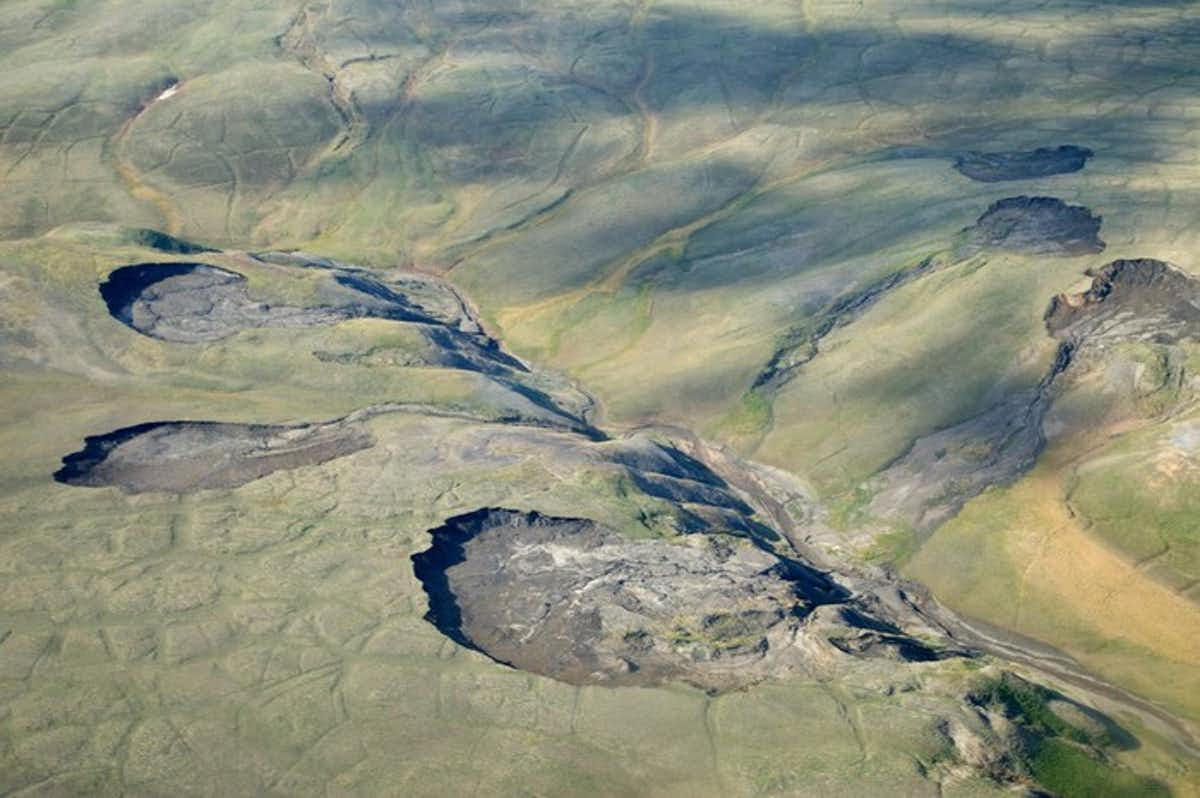
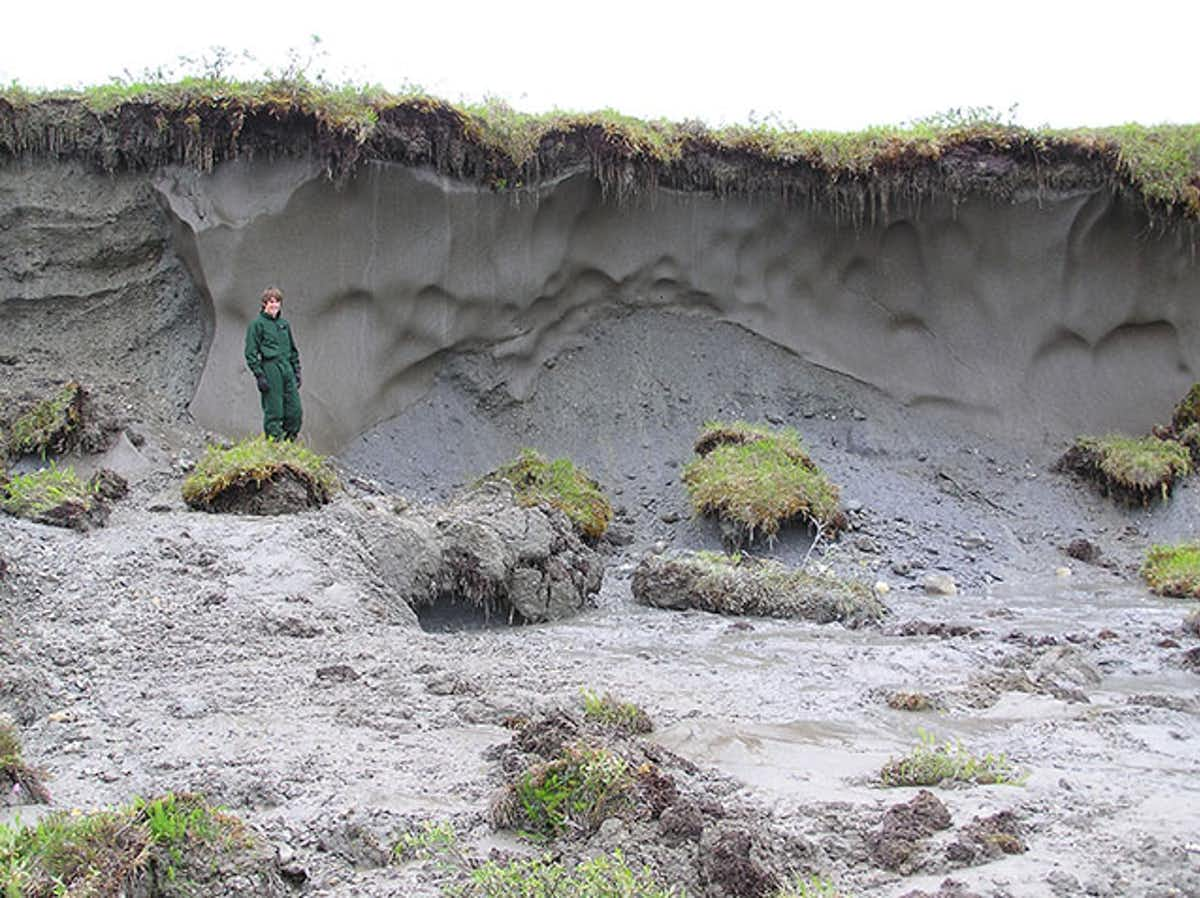
In flat terrain, ice wedges are able to develop, creating unusual geometric patterns and changes across the land.
Over decades to centuries, melting snow seeps into cracks in the soil, building up wedges of ice. These wedges cause troughs in the ground above them, creating the edges of polygons. Polygonal features naturally form as a result of the freezing and thawing process in a way similar to that seen at the bottom of drying mud flats. As ice wedges melt, the ground above collapses.
Even in extremely cold high Arctic environments, the impacts of only a few uncommonly warm summers can dramatically change the surface of the landscape, transitioning previously flat terrain into undulating as the surface begins to sink into depressions with the melting of ice in the soil below. Overall rates of ice wedge thawing have increased in response to climate warming.
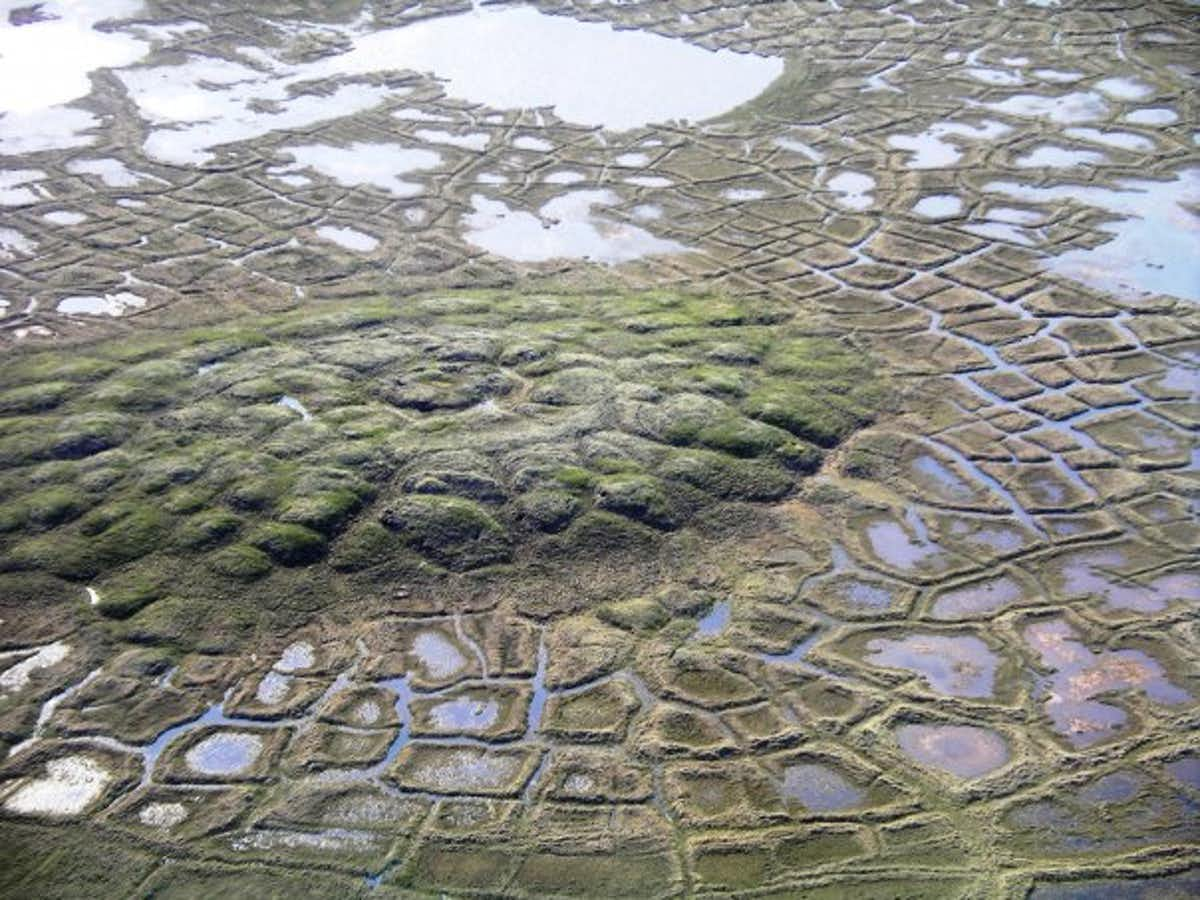
Across many Arctic regions, this thawing has also been hastened by wildfire. In a recent study, colleagues and I found that wildfires in Arctic permafrost regions increased the rate of thaw and vertical collapse of the frozen terrain for up to eight decades after fire. Because both climate warming and wildfire disturbanceare projected to increase in the future, they may increase the rate of change in northern landscapes.
The impact of recent climate and environmental change have also been felt at lower latitudes in the lowland boreal forest. There, ice-rich permafrost plateaus – elevated permafrost islands heaved above adjacent wetlands – have rapidly degraded across Alaska, Canada and Scandinavia. They can look like cargo ships filled with sedges, shrubs, and trees sinking into wetlands.
Why Does It Matter?
Frigid temperatures and short growing seasons have long limited the decomposition of dead plants and organic matter in northern ecosystems. Because of this, nearly 50% of global soil organic carbon is stored in these frozen soils.
The abrupt transitions we’re seeing today – lakes becoming drained basins, shrub tundra turning into ponds, lowland boreal forests becoming wetlands – will not only hasten the decomposition of buried permafrost carbon, but also the decomposition of above-ground vegetation as it collapses into water-saturated environments.
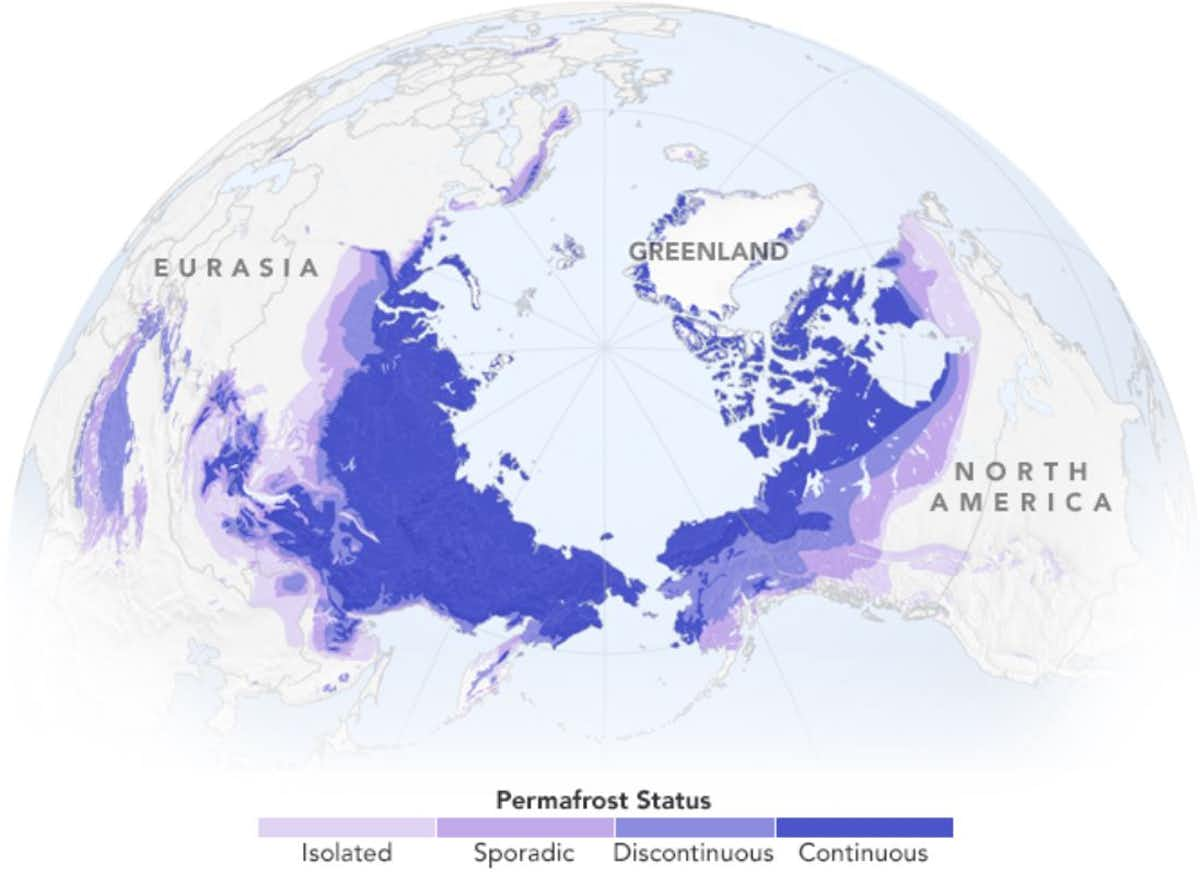
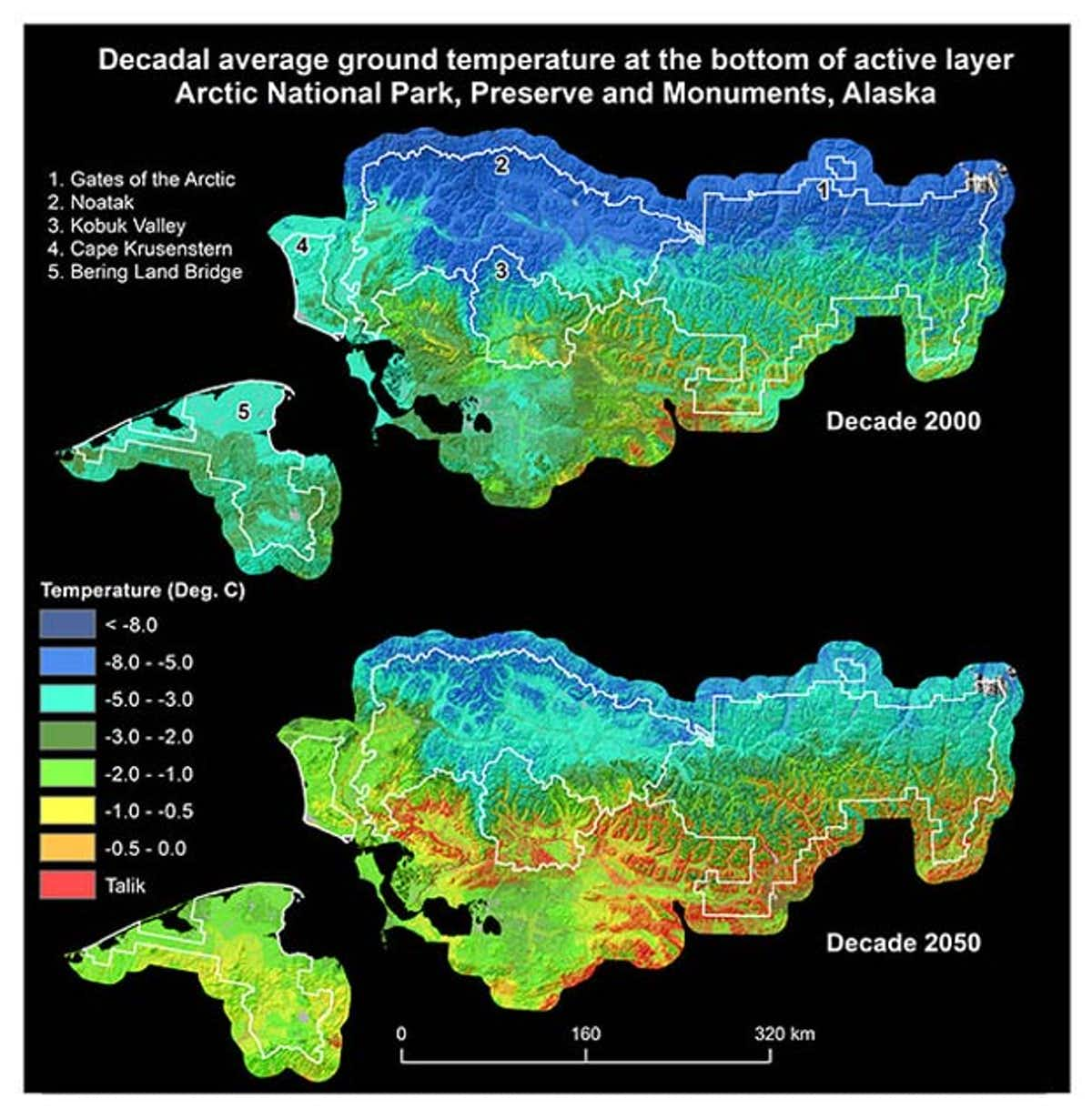
Climate models suggest the impacts of such transitions could be dire. For example, a recent modeling study published in Nature Communications suggested permafrost degradation and associated landscape collapse could result in a 12-fold increase in carbon losses in a scenario of strong warming by the end of the century.
This is particularly important because permafrost is estimated to hold twice as much carbon as the atmosphere today. Permafrost depths vary widely, exceeding 3,000 feet in parts of Siberia and 2,000 feet in northern Alaska, and rapidly decrease moving south. Fairbanks, Alaska, averages around 300 feet (90 meters). Studies have suggested that much of the shallow permafrost, 10 feet (3 meters) deep or less, would likely thaw if the world remains on its current warming trajectory.
To add insult to injury, in water-logged environments lacking oxygen, microbes produce methane, a potent greenhouse gas 30 times more effective at warming the planet than carbon dioxide, though it doesn’t stay in the atmosphere as long.
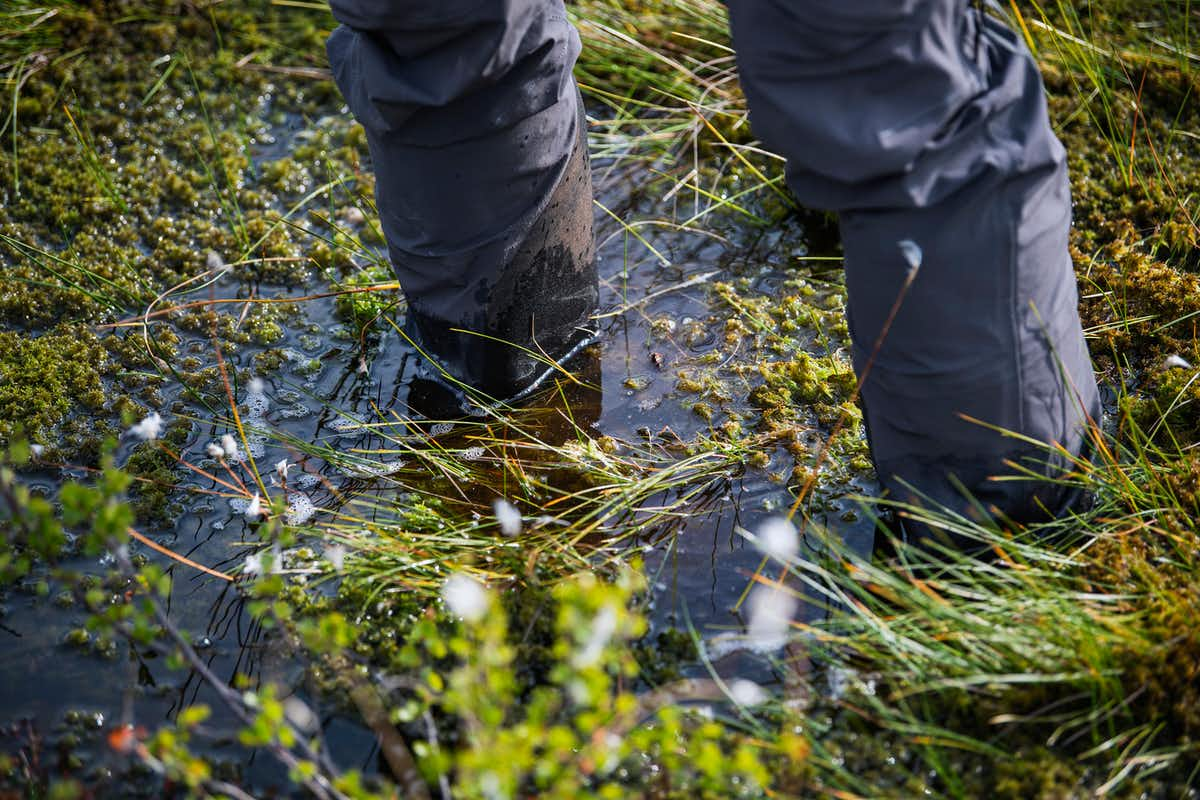
How big of a problem thawing permafrost is likely to become for the climate is an open question. We know it is releasing greenhouse gases now. But the causes and consequences of permafrost thaw and associated landscape transitions are active research frontiers.
One thing is certain: The thawing of previously frozen landscapes will continue to change the face of high-latitude ecosystems for years to come. For people living in these areas, slumping land and destabilizing soil will mean living with the risks and costs, including buckling roads and sinking buildings.


Ah, this brings me back to sitting in a lecture hall many years ago watching lectures on post glacial geomorphology. I regularly bore hiking companions as I point out the visible remains of postglacial features like pingos and ice wedge polygons that are still visible over much of the northern hemisphere if you know what you are looking for. Back in the 1970’s a probably apocryphal story was going around of a PhD candidate on WWII war history was convinced he had traced numerous unmapped bomb craters around remote areas in Ireland using aerial photos until he was told what a collapsed pingo looks like.
I don’t know if it is still prevalent, but it used to be a ‘thing’ in right wing Russian and Canadian politics that climate change was wonderful because it would turn vast areas of northern permafrost into high quality tillage land. I recall reading long ago that one of Putins closest economic advisors was a prominent proponent of this idea. Unfortunately, thats not how nature works. In previous warming periods its clear that the changes can be catastrophic, with localised swings in temperature and precipitation causing at least several hundred years of swings between frozen land, permafrost and variations on mud and flooding. And it takes far longer than a humans timeframe for good quality soil to build up.
It occurred to me once to wonder how much of the permafrost land sits on bedrock that is actually below sea level. We would get that back as salt marsh, not as tillable land. There’d be a way for me to find out, I guess, if I were worth my salt.
Absolutely not a proponent of “climate change is good”, and definitely opposed to the destruction of what remaining marshland we have…but. That salt marsh might work well for rice cultivation with the saltwater tolerant flood paddy varieties.
Of course if the permafrost is 50% ice by volume, then it will subside by 50% as it melts and thaws, and more than 50% as the carbon “land” oxidises into carbon gases. And the land-based ice features will all be melting right along. So the permafrost will be losing elevation as the seas and oceans are gaining elevation. How much Siberian permafrost land will go all the way underwater, deeper than being a salt marsh?
> And it takes far longer than a humans timeframe for good quality soil to build up.
It could be shorter. Give Musk a bunch of government funding to hire people and mine asteroids with his SpaceX rockets. Bring the Good Stuff back to fill in the permafrost holes.
He can call his employees “Belters” (h/t The Expanse)
You’re labouring under a fundamental misunderstanding as to how complex soil is. I suggest some of the earlier NC posts as a place to start in understanding why we can’t make soil fast or easily.
“How big of a problem thawing permafrost is likely to become for the climate is an open question.”
I was curious about this open question, so I decided to do some digging in AR6 to understand how IPCC projections might be taking permafrost thaw and the potential for reinforcing feedback loops into account. For this I went to the technical summary for WG2 (on physical impacts), rather than the recently released one for WG3.
The majority of the references to permafrost simply echo what is mentioned in this article: thaw will continue to be an issue that effects human communities and natural environments as warming continues. Specific references to how much extra CO2 we might expect thaw to release into the atmosphere are rare and of low confidence. In general, it is mentioned as just one of many high carbon ecosystems at risk which collectively hold somewhere between 3000-4000 GtC of potential emissions.
One point notes with low confidence that the difference in CO2 released from permafrost thaw between 1.5c and 2c scenarios is 24 GtC by 2100. I think that’s equivalent to about 70% of one year’s current emissions. Another reference to tipping point concern scenarios only seems to anticipate this one in particular to be significant issue in the 2.5-4c range.
As a layman my interpretation of this probably isn’t worth much, but I don’t find the barebones treatment this problem gets in the reports reassuring. The pattern with understudied areas of climate science seems to be that when they start making themselves felt in reality, the impacts come harder and faster than conservative research anticipated.
The ‘searching for your keys under the street light’ problem is maybe one of the major ways scientific studies, especially multidisciplinary ones, go astray. In earlier iterations of the IPCC, the same applied to glaciology. There may have been an assumption that the unknowns would balance each other out on the up and downsides, but unfortunately this does not appear to be the case.
Somehow, I’m doubting that cessation of US Russian cooperative studies of METHANE percolating from where permafrost used to be (during Biden’s attempt to save a fracked LNG pyramid scheme, which might already have set off exponential AGW) is accidental coincidence? Lots of the video & jpeg have now slipped down Google’s memory hole?
https://earthobservatory.nasa.gov/features/MethaneMatters
https://www.desmog.com/2022/03/31/exxon-conocophillips-bitcoin-mining-flare-gas-cryptocurrency-climate-change/
Awaiting public-private partnerships in permafrost profitability push.
Tax breaks, too? Bonus for intersectionality ownership. Of course! /s
I’m shocked, we’re not doing any co-gen/ flaring up around from where the ancient Beaver Valley reactors are now being fracked for ethane cracking, among Cancer Valley’s more entrepreneurial tech-savvy politicians? Shell’s leaky-ass ethane collection system could be tapped for Bitcoin mining, plastics, coal… maybe just ethane frack with 52yr old reactor steam? Lots of PASC-indentured essentials desperate for work, here!
https://www.propublica.org/events/sacrifice-zones-communities-in-the-path-of-industrial-pollution
from the DeSmog link:
A pilot project in North Dakota’s Bakken shale has already allowed ExxonMobil to steer up to 18 million cubic feet of gas a month into bitcoin mining ventures in 2021, Bloomberg reported last week,
Lot of gas –‘wasted’ into the atmosphere heedlessly…
gigatons for decades because TINA
For most of human history, permafrost has been Earth’s largest terrestrial carbon sink, trapping plant and animal material in its frozen layers for centuries. It currently stores about 1,600 billion tonnes of carbon — more than twice the amount in the atmosphere today.Mar 17, 2021
https://www.nature.com/articles/d41586-021-00659-y#:~:text=For%20most%20of%20human%20history,amount%20in%20the%20atmosphere%20today.
until, suddenly, it wasn’t
But looky here:
https://www.gigaenergy.com/
https://www.marketplace.org/2022/03/25/crypto-miners-use-natural-gas-stranded-in-wells-to-power-energy-hungry-rigs/
‘duplicity’ is a polite word that comes to mind
I’d imagined, GREEN crypto mining was already going on in Ukraine & Venezuela (where, I’d worked for ConocoPhillips, at one of Benito Mussolini’s 1927 vintage mills, as we’d been trying to coup their popular, elected leader; by my unpopular, totally unelected imbecile kleptocrat, Shrub?) With 35K more fracked methane wells in Cancer Valley, Frackistan alone; I’m guessing Hills, Joe, Kerry & Nancy’s kids could’ve found jobs (figured some way to embezzle, corrupt or counterfeit a whole new source of easily concealed revenue or transaction laundering?)
https://www.fractracker.org/2022/01/introducing-fractrackers-comprehensive-new-pennsylvania-map/
https://projects.propublica.org/graphics/
Methinks that huge tracts of our planet will be, through these processes, rendered semi-uninhabitable for human occupation. Can you imagine the difficulty of keeping roads or rail lines open as the land deforms and buckles along huge stretches of it? Sure, you can have villages and towns located on stable areas but the problem remains with transporting stuff to and from them. Water supplies could prove to be problematical as well. What a mess.
What a mess.
(spits and spits again and again and…)
Well, as more informed folks than me know, the U.S. and Russian prehistoric greedball yahoos are already checking out the natural $goodies$ as the Arctic continues to thaw. Oil deposits, rare minerals, etc. I don’t need to provide links cos there are plenty of them, and have been for years. Shaking my head in sorrow.
Think of all the coal, oil and gas findable all over Greenland once all the ice is melted off of it.
Then think of all the coal, oil and gas findable all over Antarctica once all the ice is melted off of it.
Does not look like a good place to pitch a tent much less build a city.